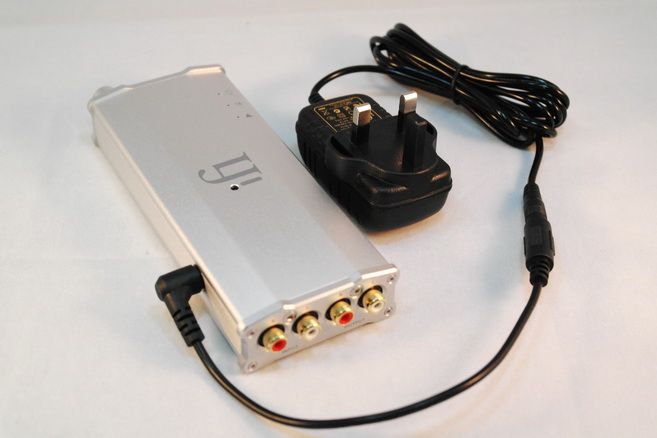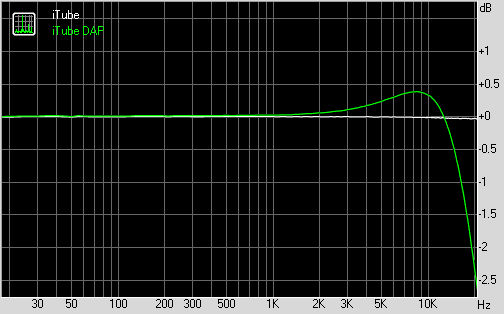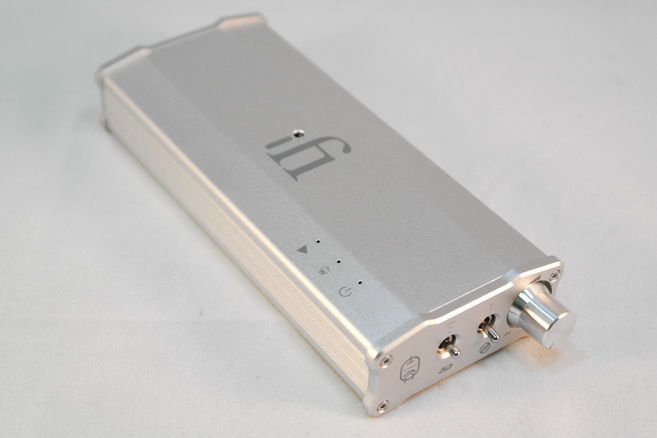As a beginning, I would like to thank Owen and Karina from iFi iClub for lending me this product.
To provide some solid base, here I leave you some information about my music tastes and my brief journey in audio.
Now, into the review, don't you love its warm orange light? I'm in love with it.

BUILD QUALITY
It comes packed in the famous iFi case, sign of "micro" range, with the same finishes as always. Robust switches, gold-plated connectors and their own-designed potentiometer improving the so acclaimed ALPS.

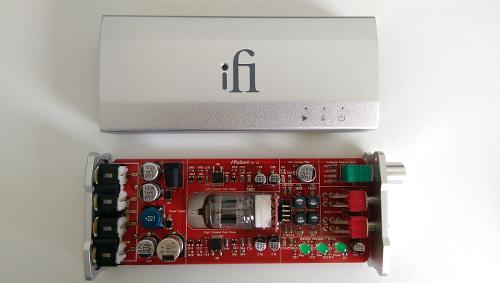
A nice quality board, with 4 layers and top notch rails and great quality resistors and capacitors. Such a beauty!


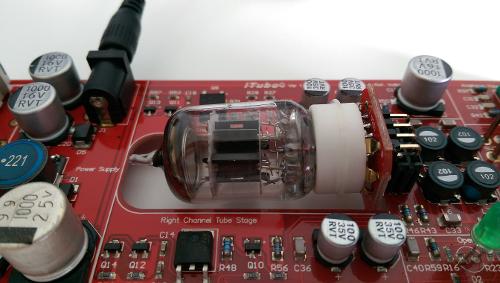
If we look at it upside down, we can see 8 DIP switches that allow us to select the gain (0dB/6dB) and whether using it as a pre-amp or as a buffer with the help of a flat screwdriver (like the one included).


I already put the silicone feet to use it in my table more confortably but to my surprise, they changed them in favour of some smaller ones with an elegant logo. With these I no longer can workarround a way to stack them. But, in any case, for stacking iFi micro/nano devices, iRack is the best choice.

INTO THE EXPERIENCE
This little gem takes about 20 seconds to wake up, that's how valves work. I encourage you to wait until it is ready (look at |> led indicator).
We plug two pairs of RCAs as input and output and we are ready to rock. I have used the included cables by iFi which offer a respectable quality. No complaints.

It is now the moment when magic breaks in, mildly sparkles the elegant and impressive General Electric 5670, also sold apart by iFi for 6922 socket valve devices making use of a tailored ceramic adapter adhered to the valve. Top notch stuff! (More info here http://ifi-audio.com/portfolio-view/accessory-nos-6922-2/ )
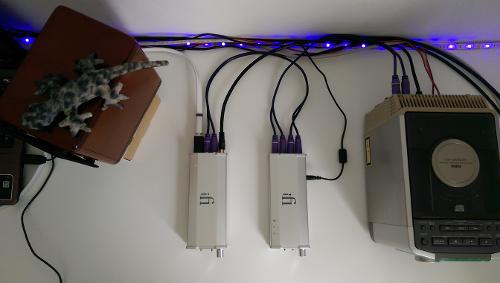


Speakers engaged, we crank up the volume and we get lost in music... Guitars sound uncompressed, the piano flows dynamically, voices gain texture... Overall a nice effect.
WHY A TUBE BUFFER IMPROVES SOUND QUALITY?
I'll try to get into the reasons why this improves musical joy:
First, considering it is an active buffer/preamp, some of the spice comes from the 9v iPower SMPS (Switched-Mode Power Supply) which powers this 5670 with very low noise (1uV). Power supply improvements affect noise floor and dynamics.
The second reason of improvement is impedance matching. With its enormous input impedance of 1 Mega Ohm when used as a buffer and 100 kilo Ohms when used as a preamp, it fixes any possible impedance mismatch between source and amplifier.
But let's get into business, we are here for the vacuum tube. It's been said by many audiophiles that tubes introduce distortion (harmonic, but they do) in an excessive manner but on the counter-part, tube fans claim solid state sounds unnatural due to odd-harmonics (IMD). So, who is right? Both! But in this particular case, iFi has deployed a very neutral and clean tube, with very low levels of harmonic distortion. The sound we get out of it is almost no colored but it provides a smooth musical experience, helping with some compressed recordings and staying true to original with uncompressed well recorded tracks.
Bass feels more real and has a slight bit more of dynamic. Overall, it has better texture.
Mids flow wonderfully, giving a very pleasant experience. Very smooth.
And highs stay neutral but less fatiguing when using bad recordings.
But I can assure you one thing, you will enjoy your music with this bad boy. For granted!

DIGITAL ANTIDOTE+ AND 3D HOLOGRAPHIC ADD-ONS
As a side note, I want to mention that Digital Antidote+ helped me masking out a "compressed sound" problem I had with the USB cable I was using with my micro iDSD. Fortunately I have already changed it in favor of an Oyaide neo d+ USB Class S, which not only solves this but improves SQ noticeably, but this is another topic... With this cable, this feature does no longer add a significant improvement with my micro iDSD (I think it does something similar to Minimum Phase filter, correct me if I am wrong)
And the last feature worth mentioning is 3D Holographic. It provides an outstanding improvement with bookshelf speakers, making them feel more spacious and bigger sounding. There are two modes: Low (*), for HiFi speakers, High(***), for bookshelf speakers and off. So you can find the one that suits you best. I used High(***) mode.

CONCLUSION
As a recap, this device is a nice addition to almost any setup, from Mid-Fi to some pricey Hi-Fi. Adds smoothness and joy to your music, pleasure is guaranteed!
I will leave you some more photos for you to enjoy

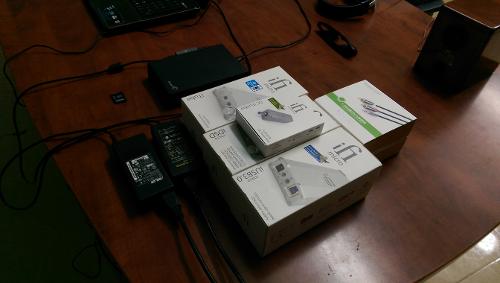


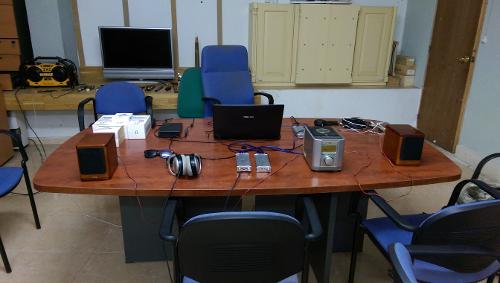
To provide some solid base, here I leave you some information about my music tastes and my brief journey in audio.
My journey in audio started in 2012, when I bought my first IEMs, the Brainwavz M1, replacing my damaged Samsung ones (included with a Samsung Galaxy S+). I had been happy with these for a year, they had a slightly warm balanced sound but unfortunately they broke. In 2013 I got into much better IEMs, the VSonic VSD1LE, that although they were outstanding for the price regarding detail, I never liked them too much due to its excessive sub-bass.
2014 was a clear milestone in my journey. I bought my first full-size headphones, the Takstar HI2050, which I still enjoy every day, an entry-level USB DAC-Amp that suited me well and my first high-end IEMs, the VSonic GR07, that I still love. Later on I started testing some good audio gear supplied by Zococity like FiiO X1, X3 and the lovely iFi micro iDSD whose I made reviews for reproductormp3.net (in Spanish, sorry :/ )
Now, 2015 has been my starting point into Hi-Fi.
I started this year with a magnificent iFi micro iDSD and a 2TB HDD to fullfill with tons of music. I began to value having a computer audio setup properly optimized to get the best out of my music. That was my goal.
I installed foobar2000, collected a good bunch of lossless music and changed my music manners. I switched from listening music spontaneously from YouTube to spending long nights with my HI2050 and my micro iDSD. During this whole year I continued testing audio devices (thanks to Zococity) and gained experience writing reviews and improving my critical listening habilities. FiiO X5, X5II, E12A, Westone W50, iFi nano iDSD, iFi nano iCAN, HiFiMAN HE-400, HE-400S, RE-400, RE-600... a lot of stuff! And about the latter, I fell in love with them and stayed with me.
Month by month I continued tweaking my foobar2000, customizing the UI, adding custom tags... Everything to make this experience better.
But actually, the biggest step happened with those RE-600, who took me a long time to appreciate, because they changed my perspective about music, texture and about how music really sounds. I discovered a lot of hidden details in music and learnt about mastering and dynamic range. The more I listen to them, the more I love them. As you know, good audio is very rewarding.
But oh, when october hit me... I won an iFi micro iUSB3.0 in an iFi competition! It revolutionized my audio setup and my perspective regarding electronics, cables and noise. Investigating about this subject, I learnt about the importance of USB cables, good power supplies and personally I did a hell ton of analysis to fix problems in my setup.
Now into this year, 2016, with a wider musical kwnowledge base, centered in well recorded music like jazz and SACD material it's been a great year. My goal has been achieving a noise-free audio setup, to be able to enjoy more detail at a lower volume in order to take a good care of my ears. It took me a long time learning about ground loops, cables, conexions, audio setups analysis but it has been definitely worthy.
I ran a homemade server with a Raspberry Pi 2 to get my noisy HDD out of my room, installed a trusty Cat.5e network cable and began into speaker setups with a pair of JVC SP-UX2000RGD (of 1996!) made in cherry wood that sounds wonderfully. Currently I am also learning about acoustics, speaker positioning, sound isolation, cables (yeah, it's never enough hahaha), materials, properties and improving my analytic capabilities.
And about my sound preferences: I like a balanced sound with life-like texture. As a musician, I care a lot about texture and time precision without forgetting an ample soundstage. I love detail but as long as it does not sacrify any of the given points.
I hope you this helped you understand my brief journey into this world and know better my point of view
2014 was a clear milestone in my journey. I bought my first full-size headphones, the Takstar HI2050, which I still enjoy every day, an entry-level USB DAC-Amp that suited me well and my first high-end IEMs, the VSonic GR07, that I still love. Later on I started testing some good audio gear supplied by Zococity like FiiO X1, X3 and the lovely iFi micro iDSD whose I made reviews for reproductormp3.net (in Spanish, sorry :/ )
Now, 2015 has been my starting point into Hi-Fi.
I started this year with a magnificent iFi micro iDSD and a 2TB HDD to fullfill with tons of music. I began to value having a computer audio setup properly optimized to get the best out of my music. That was my goal.
I installed foobar2000, collected a good bunch of lossless music and changed my music manners. I switched from listening music spontaneously from YouTube to spending long nights with my HI2050 and my micro iDSD. During this whole year I continued testing audio devices (thanks to Zococity) and gained experience writing reviews and improving my critical listening habilities. FiiO X5, X5II, E12A, Westone W50, iFi nano iDSD, iFi nano iCAN, HiFiMAN HE-400, HE-400S, RE-400, RE-600... a lot of stuff! And about the latter, I fell in love with them and stayed with me.
Month by month I continued tweaking my foobar2000, customizing the UI, adding custom tags... Everything to make this experience better.
But actually, the biggest step happened with those RE-600, who took me a long time to appreciate, because they changed my perspective about music, texture and about how music really sounds. I discovered a lot of hidden details in music and learnt about mastering and dynamic range. The more I listen to them, the more I love them. As you know, good audio is very rewarding.
But oh, when october hit me... I won an iFi micro iUSB3.0 in an iFi competition! It revolutionized my audio setup and my perspective regarding electronics, cables and noise. Investigating about this subject, I learnt about the importance of USB cables, good power supplies and personally I did a hell ton of analysis to fix problems in my setup.
Now into this year, 2016, with a wider musical kwnowledge base, centered in well recorded music like jazz and SACD material it's been a great year. My goal has been achieving a noise-free audio setup, to be able to enjoy more detail at a lower volume in order to take a good care of my ears. It took me a long time learning about ground loops, cables, conexions, audio setups analysis but it has been definitely worthy.
I ran a homemade server with a Raspberry Pi 2 to get my noisy HDD out of my room, installed a trusty Cat.5e network cable and began into speaker setups with a pair of JVC SP-UX2000RGD (of 1996!) made in cherry wood that sounds wonderfully. Currently I am also learning about acoustics, speaker positioning, sound isolation, cables (yeah, it's never enough hahaha), materials, properties and improving my analytic capabilities.
And about my sound preferences: I like a balanced sound with life-like texture. As a musician, I care a lot about texture and time precision without forgetting an ample soundstage. I love detail but as long as it does not sacrify any of the given points.
I hope you this helped you understand my brief journey into this world and know better my point of view

Now, into the review, don't you love its warm orange light? I'm in love with it.

BUILD QUALITY
It comes packed in the famous iFi case, sign of "micro" range, with the same finishes as always. Robust switches, gold-plated connectors and their own-designed potentiometer improving the so acclaimed ALPS.


A nice quality board, with 4 layers and top notch rails and great quality resistors and capacitors. Such a beauty!



If we look at it upside down, we can see 8 DIP switches that allow us to select the gain (0dB/6dB) and whether using it as a pre-amp or as a buffer with the help of a flat screwdriver (like the one included).


I already put the silicone feet to use it in my table more confortably but to my surprise, they changed them in favour of some smaller ones with an elegant logo. With these I no longer can workarround a way to stack them. But, in any case, for stacking iFi micro/nano devices, iRack is the best choice.

INTO THE EXPERIENCE
This little gem takes about 20 seconds to wake up, that's how valves work. I encourage you to wait until it is ready (look at |> led indicator).
We plug two pairs of RCAs as input and output and we are ready to rock. I have used the included cables by iFi which offer a respectable quality. No complaints.

It is now the moment when magic breaks in, mildly sparkles the elegant and impressive General Electric 5670, also sold apart by iFi for 6922 socket valve devices making use of a tailored ceramic adapter adhered to the valve. Top notch stuff! (More info here http://ifi-audio.com/portfolio-view/accessory-nos-6922-2/ )



Speakers engaged, we crank up the volume and we get lost in music... Guitars sound uncompressed, the piano flows dynamically, voices gain texture... Overall a nice effect.
WHY A TUBE BUFFER IMPROVES SOUND QUALITY?
I'll try to get into the reasons why this improves musical joy:
First, considering it is an active buffer/preamp, some of the spice comes from the 9v iPower SMPS (Switched-Mode Power Supply) which powers this 5670 with very low noise (1uV). Power supply improvements affect noise floor and dynamics.
The second reason of improvement is impedance matching. With its enormous input impedance of 1 Mega Ohm when used as a buffer and 100 kilo Ohms when used as a preamp, it fixes any possible impedance mismatch between source and amplifier.
But let's get into business, we are here for the vacuum tube. It's been said by many audiophiles that tubes introduce distortion (harmonic, but they do) in an excessive manner but on the counter-part, tube fans claim solid state sounds unnatural due to odd-harmonics (IMD). So, who is right? Both! But in this particular case, iFi has deployed a very neutral and clean tube, with very low levels of harmonic distortion. The sound we get out of it is almost no colored but it provides a smooth musical experience, helping with some compressed recordings and staying true to original with uncompressed well recorded tracks.
Bass feels more real and has a slight bit more of dynamic. Overall, it has better texture.
Mids flow wonderfully, giving a very pleasant experience. Very smooth.
And highs stay neutral but less fatiguing when using bad recordings.
But I can assure you one thing, you will enjoy your music with this bad boy. For granted!

DIGITAL ANTIDOTE+ AND 3D HOLOGRAPHIC ADD-ONS
As a side note, I want to mention that Digital Antidote+ helped me masking out a "compressed sound" problem I had with the USB cable I was using with my micro iDSD. Fortunately I have already changed it in favor of an Oyaide neo d+ USB Class S, which not only solves this but improves SQ noticeably, but this is another topic... With this cable, this feature does no longer add a significant improvement with my micro iDSD (I think it does something similar to Minimum Phase filter, correct me if I am wrong)
And the last feature worth mentioning is 3D Holographic. It provides an outstanding improvement with bookshelf speakers, making them feel more spacious and bigger sounding. There are two modes: Low (*), for HiFi speakers, High(***), for bookshelf speakers and off. So you can find the one that suits you best. I used High(***) mode.

CONCLUSION
As a recap, this device is a nice addition to almost any setup, from Mid-Fi to some pricey Hi-Fi. Adds smoothness and joy to your music, pleasure is guaranteed!
I will leave you some more photos for you to enjoy






 now im a happy potato !
now im a happy potato !





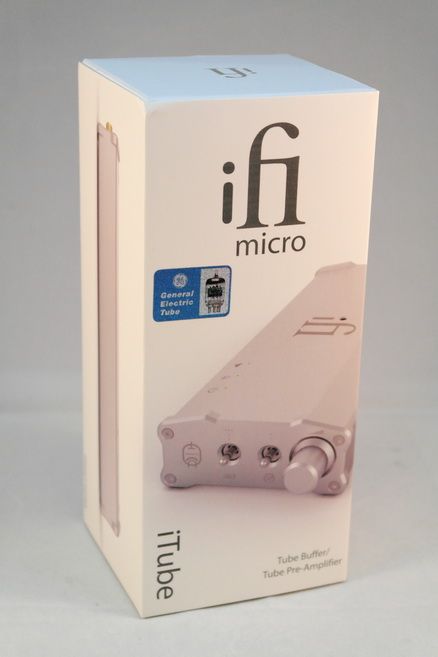
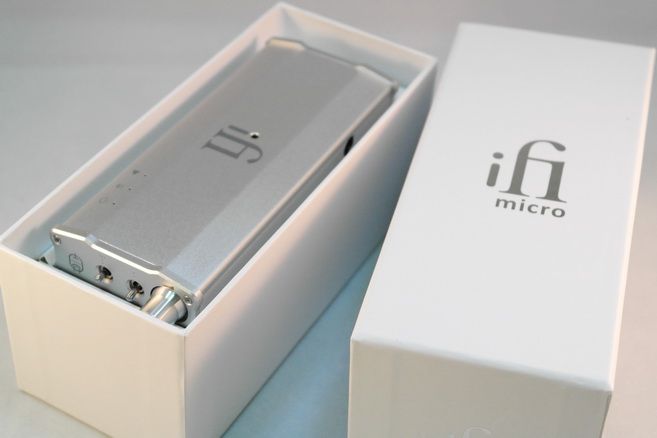
![size]](http://i90.photobucket.com/albums/k240/ofey_s/iFi/iTu-08.jpg[size=large][/size])
